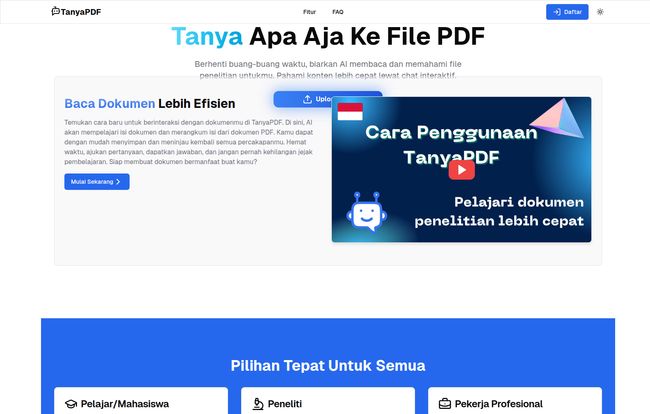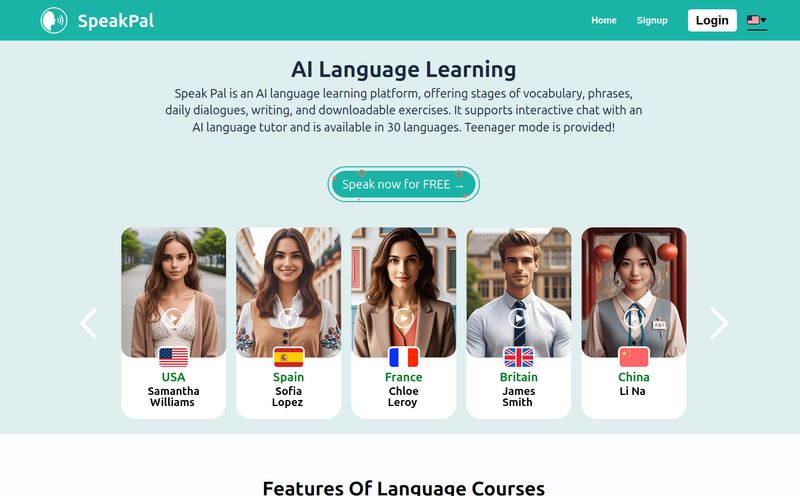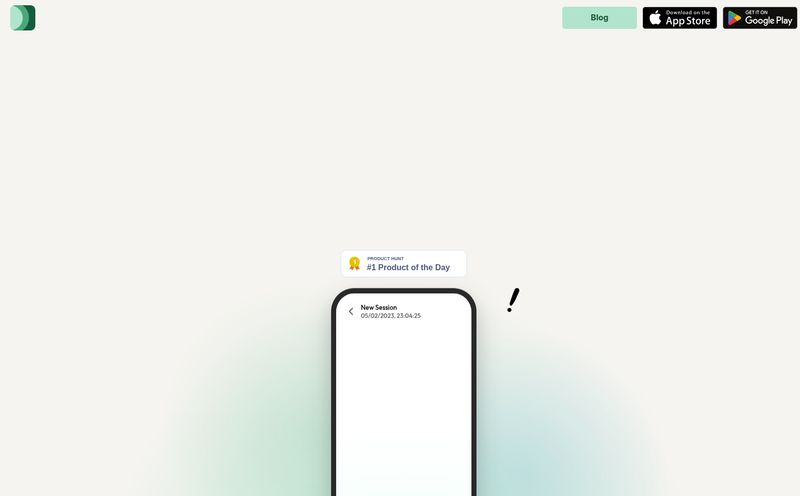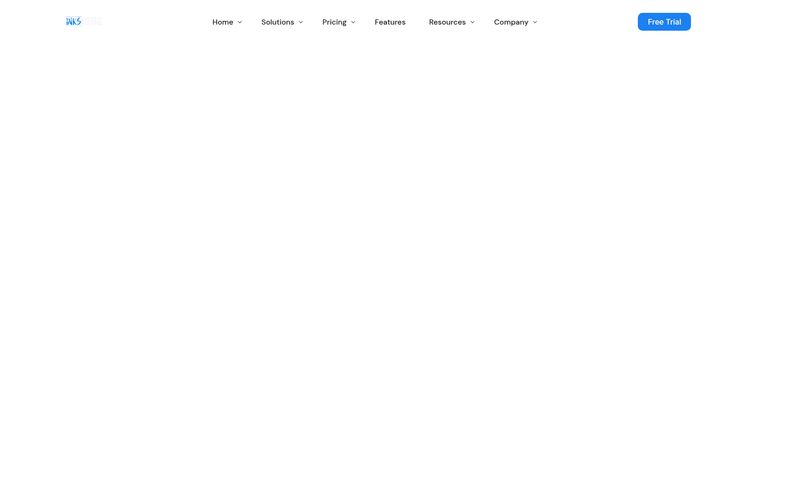We've all been there. It’s 11 PM, the coffee has gone cold, and you’re staring at a 150-page PDF that holds the one tiny piece of information you need. It could be a dense academic journal for your thesis, a mind-numbing legal agreement, or a technical report that makes absolutely zero sense. You scroll, you skim, you search for keywords, and your eyes just glaze over. The digital paper-stack struggle is real.
For years, we’ve just accepted this as part of the deal. But what if you could just… talk to the document? Ask it questions. Tell it to summarize chapter three for you. Sounds a bit like sci-fi, right? Well, not anymore. I’ve been playing around with a tool called TanyaPDF, and it’s one of a growing number of AI platforms aiming to turn that frustrating scroll-fest into a simple conversation.
So, does it live up to the hype? Or is it just another shiny new toy that fails in practice? Let's get into it.
What Exactly is TanyaPDF?
At its core, TanyaPDF is an AI-powered tool designed to make you smarter, faster. You upload a PDF, and instead of reading it top-to-bottom, you open up a chat window. From there, you can ask it anything about the document's contents. Think of it like having a super-smart research assistant who’s already done the heavy reading and is just waiting for your instructions.
The website itself is in Indonesian (“Tanya Apa Aja Ke File PDF” translates to “Ask Anything to a PDF File”), which gives it a nice local flavor in a market often dominated by US-based tools. The premise is simple: stop wasting time and let an AI understand the document for you so you can grasp the content faster. I'm always here for anything that saves me from drowning in a sea of academic jargon.
Who is TanyaPDF Built For? (Hint: Probably You)
The platform clearly outlines its audience, and honestly, it covers a pretty wide swath of people who deal with documents on the regular.
For the Students and Academics
I wish I had this back in university. Imagine uploading all your lecture notes and required readings for a course and then asking the AI to create study questions for you. Or when you're deep in thesis work, you could upload a dozen research papers and ask, “What are the main counter-arguments to this theory across these documents?” It’s a game-changer for cutting down on research time and getting straight to the core concepts.
For the Diligent Researchers
If your job involves literature reviews, you know the pain. You have 50 tabs open, trying to cross-reference findings. TanyaPDF offers a way to centralize that. You can interact with a single paper deeply, asking it to explain its methodology or define a specific term used by the author. It makes the process way more dynamic than just highlighting text.
For the Busy Professionals
This might be the most underrated use case. Got a 40-page sales contract to review? Upload it and ask, “What are the termination clauses?” or “Summarize the payment terms.” Analyzing financial reports? “What was the quarter-over-quarter revenue growth?” It’s about getting mission-critical answers in seconds, not hours.

Visit TanyaPDF
My First Impressions: A Walkthrough of TanyaPDF
Okay, so I took it for a spin. I uploaded a fairly dense research paper on SEO trends and user behavior. The interface is clean and straightforward—no unnecessary fluff. You get your document on one side and a chat box on the other. Classic.
I started with a broad question: “Summarize the key findings of this paper in five bullet points.”
Within about 15 seconds, it spit out a surprisingly coherent summary. It was accurate and pulled the main arguments directly from the text. Impressive.
Then I got more specific. “According to the paper, what is the correlation between bounce rate and search ranking?” Again, it pulled the exact sentence from the study that addressed this. This is where the magic lies. It's not just summarizing; it's a genuine information retrieval tool. One feature I particularly liked was the ability to save and review past conversations. If you're working on a long-term project, you can always go back to a document and see what questions you asked and what answers the AI gave. It prevents you from losing your train of thought, something my brain is notorious for.
The Good, The Bad, and The AI
No tool is perfect, right? Here’s my honest breakdown.
On the plus side, the time-saving aspect cannot be overstated. It genuinely turns hours of reading into minutes of targeted questions. For me, thats a massive win. The interactive nature also makes learning less passive. Instead of just consuming information, you’re engaging with it, which is proven to help with retention.
However, there are some reality checks. The AI’s accuracy is directly tied to the quality of the PDF you feed it. If you upload a grainy, scanned document with weird formatting or a tilted orientation, it's going to struggle. Garbage in, garbage out, as they say. The tool itself is upfront about possibly not understanding complex images or tables perfectly, which is a common limitation for this type of AI right now. And, of course, you need an internet connection, so no offline work in a cabin in the woods.
What About the Price Tag?
This is where things get interesting. As a professional, the first thing I look for is the pricing page. How much is this going to set me back? So I looked for the pricing or plans section, clicked on it, and… I was met with an “Oops! Halaman Tidak ditemukan” (Page Not Found) error.
Now, this could mean a few things. The tool might be so new that the page isn't fully set up. It might be temporarily down. Or, and this is my best guess, TanyaPDF might be operating on a free-to-use basis for now to attract users before introducing paid tiers. The prominent “Mulai Sekarang” (Start Now) button suggests a low barrier to entry. While a bit unprofessional, the broken link paradoxically made the experience feel more authentic—a startup in the wild, still figuring things out. I’ll be keeping an eye on this for sure.
Conclusion: Is TanyaPDF Your New Research Buddy?
So, what's the final verdict?
I think TanyaPDF is a fantastic and promising tool, especially for its target audience. It's not going to write your paper for you, and it won't replace critical thinking. But what it does do is remove the single biggest bottleneck in research and learning: the tedious process of manual information extraction.
It acts as a powerful filter, allowing you to get straight to the parts of a document that matter most to you. It transforms static, boring documents into interactive knowledge bases. While it has its limitations—like dealing with poor-quality scans or intricate charts—the core functionality is solid and incredibly useful.
If you're a student, researcher, or professional who regularly feels buried under a mountain of PDFs, I’d say give TanyaPDF a shot. It might just be the smart, time-saving assistant you’ve been looking for.
Frequently Asked Questions about TanyaPDF
How does TanyaPDF actually work?
It uses Artificial Intelligence, specifically Natural Language Processing (NLP) models. When you upload a PDF, the AI scans and 'reads' the entire text, creating a digital index of its content. When you ask a question, the AI searches this index to find the most relevant sections and then formulates an answer in conversational language.
Is it safe to upload my sensitive documents?
This is a valid concern. Most services like this have a privacy policy that outlines how they handle your data. While I couldn't find a dedicated policy page easily, the FAQ asks “Is my file safe?”, suggesting they are aware of the concern. As a general rule, I'd be cautious about uploading highly confidential or proprietary documents to any third-party cloud service unless their security protocols are clearly stated and verified. For general research or public-domain papers, it's perfectly fine.
Can it really understand charts and tables in a PDF?
The site's FAQ itself hints that this can be a challenge. Text-based AI is great at reading words, but interpreting visual data like a complex chart or a heavily formatted table is a different beast. It might be able to pull text from a simple table, but it likely won't be able to explain the meaning of a trend in a line graph. For now, it's best to rely on it for textual analysis.
How much does TanyaPDF cost?
As of this writing, the pricing information isn't available on their website—the link seems to be broken. This suggests the tool might be in a free beta phase or will introduce pricing later. The best way to find out is to sign up and use it, as many such tools offer a generous free tier.
Who is the ideal user for TanyaPDF?
The ideal user is anyone who needs to extract specific information from long documents quickly. This includes students working on assignments, academics conducting literature reviews, lawyers examining contracts, and business analysts reviewing reports. If your workflow involves a lot of reading and note-taking from PDFs, this tool is designed for you.
Reference and Sources
- TanyaPDF Official Website: www.tanyapdf.com



